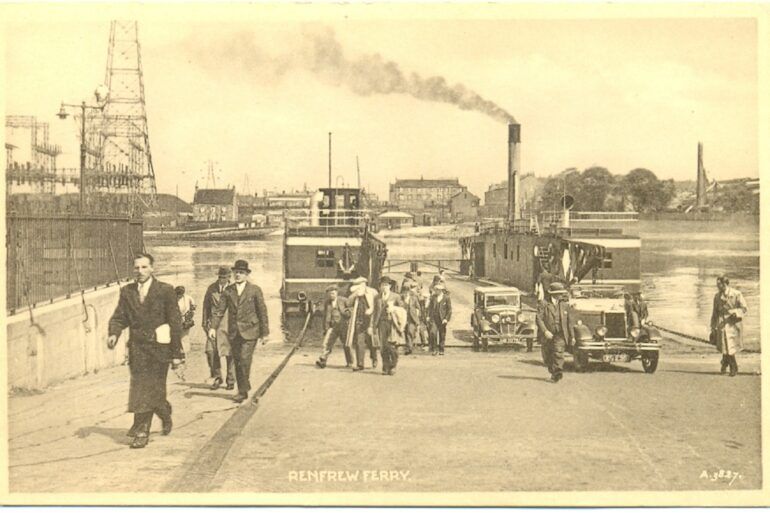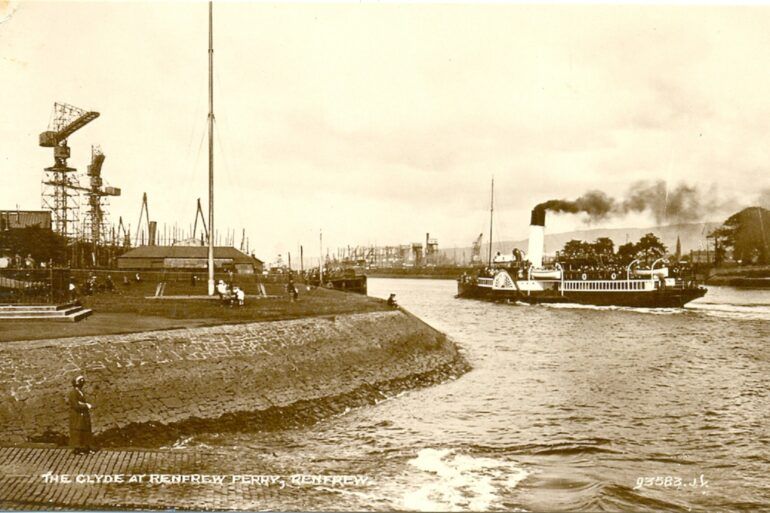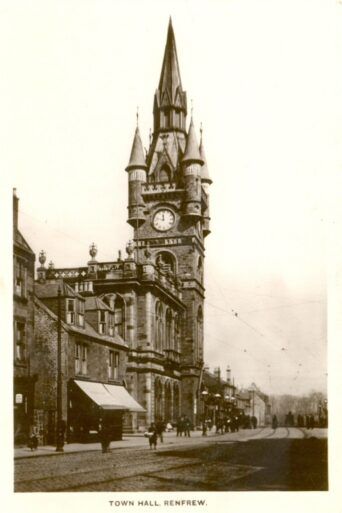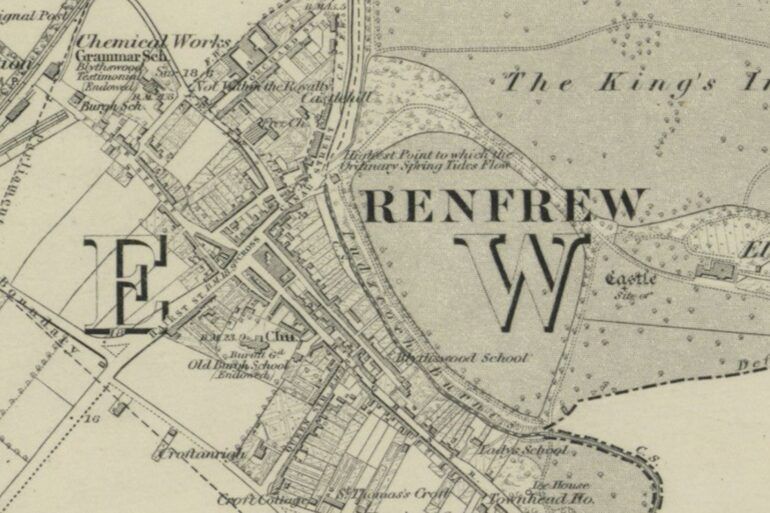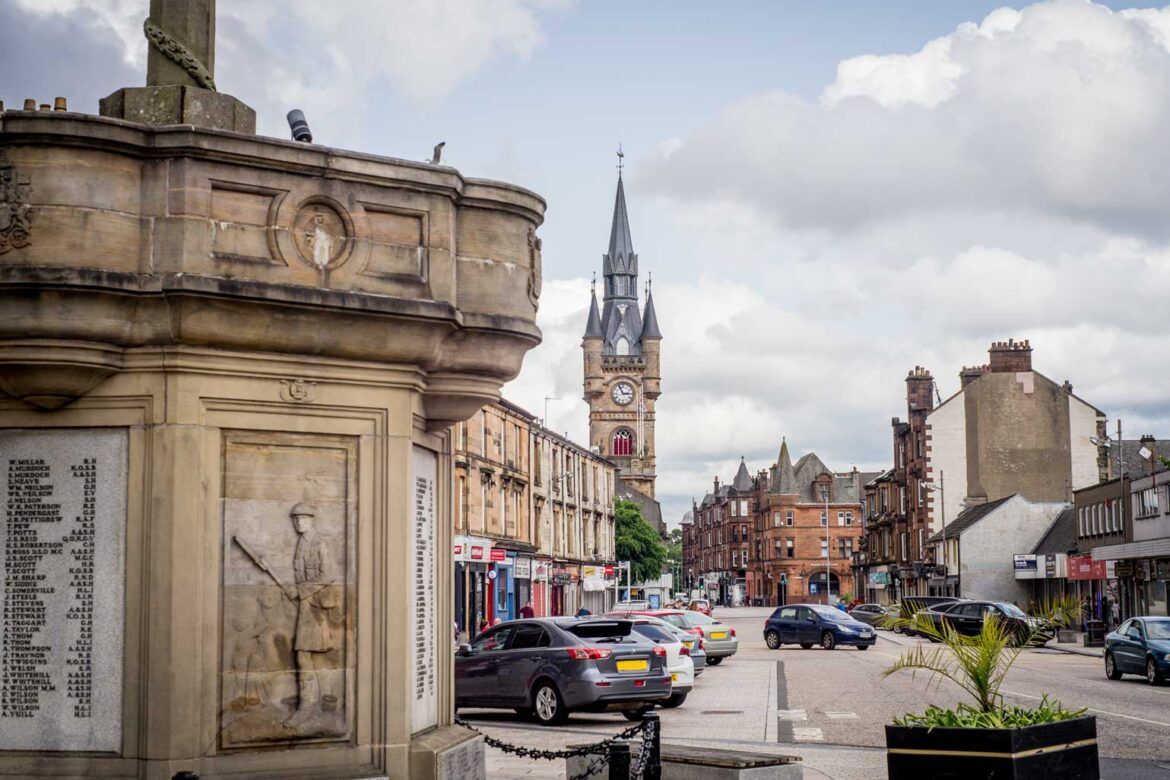When it comes to towns in Renfrewshire, very few have as storied or varied a history as the area that it extracts its name from.
Reportedly inhabited by the Iberians and Ivernians from the outset of civilisation, their patronage of the area now known as Renfrew would be followed by that of the celtic Damnoni people.
Like much of the surrounding area, Renfrew was subjugated by the Romans during the time of their occupation but little to no trace of their presence remains today.
Derived from the old British for rhyn frwd, which translates to ‘point of the current’, the name owes to it serving as the location where the River Cart joins the nearby Clyde. As for the first recorded reference of its name, this came in the 12th Century when Walter Fitz Alan– who also founded the nearby Paisley Abbey– was named the High Steward Of Scotland by King David I. Shortly thereafter, he built a royal castle. Although there is no archaeological evidence that can be seen by the naked eye, it’s believed that this castle stood in the area where Braehead Shopping Centre is today.
According to historical sources, the reasons for the castle’s construction were two-fold: To defend them against the looming threat of Norse invaders and to prevent Somerled– known as The Lord Of The Isles– from advancing his position.
With the Norse-Gaelic intent on claiming the territory for himself , Renfrew would be the site of a major conflict between the warring sides that were the Kingdom Of Scotland and the Kingdom Of The Isles. Fended off by forces led by Fitz Alan as well as Herbert, Bishop Of Glasgow and Baldwin, sheriff of Lanark & Clydeside, this notable conflict would lead to Somerled’s demise at the hands of his enemy’s swords.
By then known as the “Royal Cradle Of The Stewarts”, Renfrew would be formally appointed as a royal burgh in 1397. Rather than being a ceremonial title, this meant that it was the only town permitted to stage markets and fairs.
In addition to its role in the downfall of the Lord Of The Isles– which is now a ceremonial title that’s held by Prince Charles, also known as the “Baron Of Renfrew”– the town would also prove to be decisive in the foiling of the Monmouth Rebellion against King James II when in 1685, the 9th Earl Of Argyll was captured at a site that is now commemorated by the Argyll Stones.
Despite its once crucial strategic position, Renfrew Castle would gradually fall into disuse as the town became synonymous with trade and industry. Fittingly, this meant that after this once Royally-endorsed stronghold was demolished, some of its stonework was repurposed in order to build the 18th century soapworks which stood at Castlehill Gardens.
In the mid-to-late 1800s, Renfrew would become an integral cog in the ongoing industrialisation of Scotland as a whole. Where much of the county primarily traded in thread and cotton, Renfrew strayed away from the norm. On account of its harbour, the area was a perfect fit for the nation’s flourishing shipbuilding endeavours.
In addition to the Babcock and Wilcox Co. Boiler Works which stood next to Robertson Park, the region played host to Simons & Lobnitz shipyards. Initially seen as sworn enemies, William Simons & Co were considered to be pioneers by introducing steam-driven bucket dredgers and hoppers with bottom-opening doors in the 19th century. Meanwhile, the neighbouring Henry Lobnitz-owned operation would build sixty minor war vessels between 1915-1945 for the Royal Navy. Among them was the ground-breaking HMS President, which has the distinction of representing the first class of purpose-built anti-submarine warships. Around that same era, a military airfield was established in the area.
Over the years, these two adjacent yards would produce dredgers and hopper barges which were used across Africa, India and the Panama Canal. Despite their history of being bitter rivals, SImons and Lobnitz would join forces in 1957 and by the time that they closed their doors in 1964, it was estimated that the Renfrew shipyards had overseen the creation and launch of over 1300 vessels.
Although its days as a hub for construction has elapsed, the Renfrew-Yoker Ferry, a crossing which has been operational since 1790– continues to preside over the waters. Having switched to a steam-powered engine in 1865, this ferry was a crucial mode of transport for those involved in the shipbuilding industry and survives today as a pedestrian only-serve.
While landmarks such as the castle were lost, much of Renfrew’s most awe-inspiring, 19th and 20th century architecture have remained intact. Most notably, its Category-a listed, French-gothic style town hall, its mercat cross and the stunning, 100-year-old Victory Baths as designed by Paisley architect TG Abercrombie.
